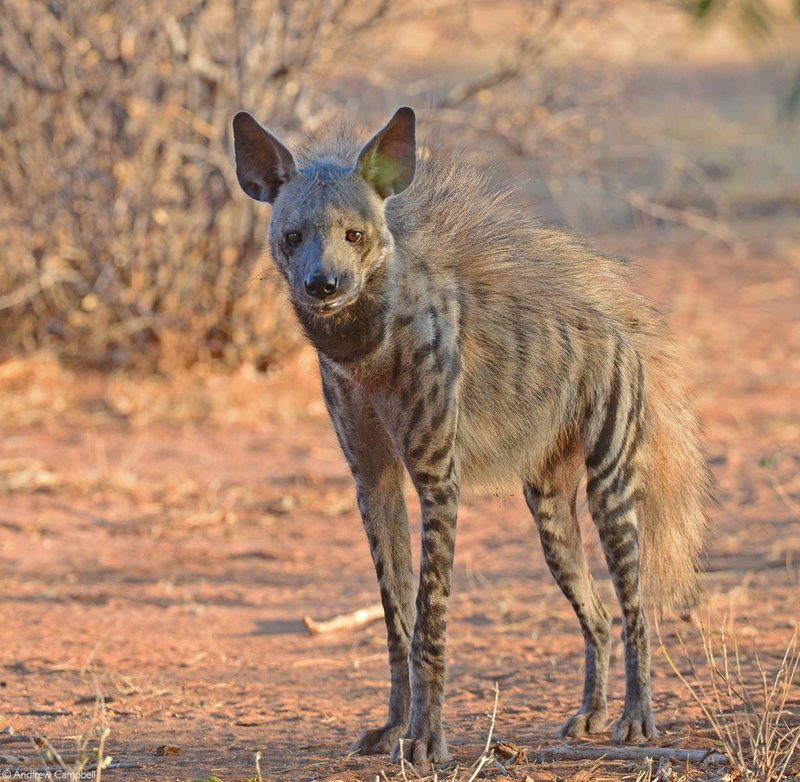
To answer that, let’s dig into their behavior, social structure, and how they interact with humans. Think of it like peeling back the layers of an onion. Each layer reveals a bit more about these fascinating animals and helps us understand if they really pose a threat to us. So, grab your favorite drink, and let’s get into the world of striped hyenas!
Understanding the Striped Hyena’s Behavior
Striped hyenas are known for their shy and elusive nature. Unlike the more boisterous spotted hyena, striped hyenas tend to keep to themselves. They primarily feed on carrion, which means they are scavengers rather than hunters. This diet plays a significant role in their interactions with humans. Since they don’t actively seek out prey, they generally avoid confrontations.
However, if they feel cornered or threatened, striped hyenas can become defensive. Imagine a dog that’s been backed into a corner—it might snap out of fear. Similarly, striped hyenas can show aggression if they feel their safety is at stake. In interactions with humans, they are more likely to flee than fight, but it’s essential to respect their space.
Are They Naturally Aggressive?
You might be wondering if striped hyenas have a naturally aggressive streak. The short answer is no. They are not inherently aggressive towards humans. Most of the time, they prefer to stick to the shadows, scavenging for food and avoiding potential threats. Their behavior is driven by survival instincts, much like other wild animals.
In various regions where they coexist with humans, people often note that striped hyenas are more curious than dangerous. They might approach out of interest rather than aggression. However, it’s crucial to remember that curiosity can sometimes lead to risky encounters, especially if they feel threatened.
Striped Hyenas and Their Habitat
Striped hyenas inhabit a variety of environments, from scrublands to deserts. Their preference for dry areas often brings them into contact with human settlements, particularly in rural regions. This overlap results in unique situations, where people and hyenas might come into conflict over resources. It’s an unfortunate reality for both species, as hyenas may scavenge leftover food from humans, leading to misunderstandings.
In urban areas, hyenas might venture closer to human populations in search of food. If you ever find yourself in regions where striped hyenas live, be mindful of not leaving food scraps outside. This simple act can help minimize unwanted interactions with these fascinating creatures and promote peaceful coexistence.
How Habitat Affects Behavior
The hyena’s habitat greatly influences its behavior towards humans. In areas with abundant natural resources, striped hyenas tend to keep their distance from human activities. However, in regions where food is scarce, they may come closer to villages or towns. This behavior can understandably raise concerns among locals.
To keep things in perspective, it’s essential to recognize that human habits can push wildlife to adapt. When we encroach on their territories or alter their environments, we unintentionally set the stage for conflict. Changing our behaviors, like properly disposing of waste, can create a less hostile environment for both parties.
Human Encounters with Striped Hyenas
In some cultures, striped hyenas have been mythologized, often portrayed as dangerous or fearsome. This perception can stem from rare encounters where hyenas have shown aggression. However, these instances are not the norm. Most people living in regions with striped hyenas rarely have negative experiences.
When stripped of sensationalism, these encounters often tell a different story. Many people report seeing striped hyenas at a distance, often during nighttime. Their nocturnal nature means that most of their activity occurs when humans are less present. This leads to a curious but non-threatening dynamic—humans get glimpses, but aggression is seldom a factor.
Common Misunderstandings
One common misunderstanding is that striped hyenas are dangerous because of their appearance. With their strong jaws and unique look, they can seem intimidating. However, much of their reputation comes from folklore and exaggerated tales. The truth is, striped hyenas are generally cautious animals. They’ll often opt for flight over fight, making them far less dangerous than they might appear.
Moreover, the role of education can’t be overstated. Understanding these animals’ behavior can demystify them and prevent fear. Knowledge about their habits fosters respect, helping humans coexist peacefully.
What to Do If You Encounter One
If you ever find yourself face-to-face with a striped hyena, the best course of action is to remain calm. Here’s a quick guide to handling the situation:
- Stay Still: Movement can provoke a curious reaction. Stand your ground.
- Keep Distance: Allow the hyena room to move away. They’re more likely to flee than approach.
- Make Noise: Gently vocalizing can help assert your presence without being threatening.
- Don’t Feed Them: Feeding wild animals can encourage them to approach humans more frequently, leading to potential conflicts.
By following these guidelines, you can help ensure that your encounter remains a calm, safe experience for both you and the hyena.
The Importance of Respect
Ultimately, the key to peaceful coexistence lies in mutual respect. Understanding striped hyenas and the environment they thrive in can help foster a safe atmosphere. While they may seem daunting, they are far more interested in finding food than posing a threat to humans. So, the next time you hear the haunting laughter of a hyena at night, remember: they’re part of the wild tapestry that we share the world with.
In conclusion, striped hyenas are not inherently dangerous to humans. Their shy and evasive nature typically keeps them away from direct conflict. With proper understanding and respect for their space, we can coexist peacefully with these fascinating animals. As we explore the world around us, let’s remember that most wildlife, including striped hyenas, isn’t out to harm us. They’re simply living their lives, much like we are, in a world that’s constantly shifting. So, the next time you hear about striped hyenas, think of them not as threats but as essential members of our ecosystem.

